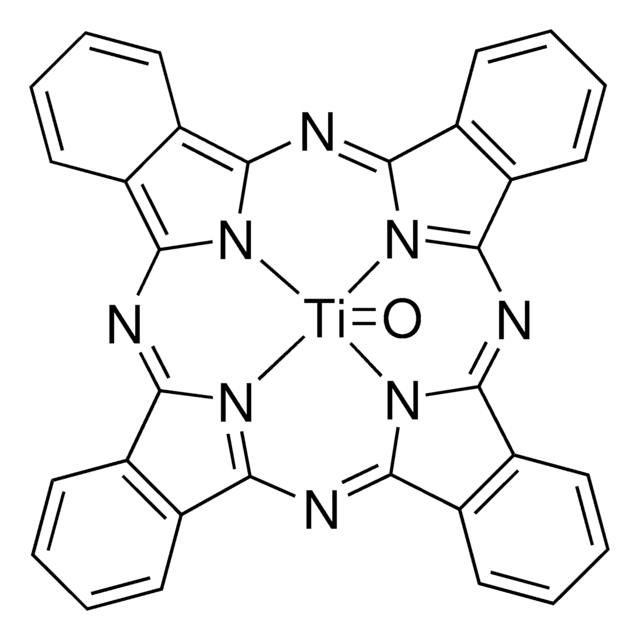791547
Titania paste, transparent
Synonym(s):
Greatcell Solar®, TiO2 paste
About This Item
Recommended Products
description
Crystal Structure: > 99% anatase (analysis carried out on starting material, prior to paste manufacture)
form
paste (yellow)
concentration
19.0 wt. %
avg. part. size
20 nm (active)
viscosity
40000-55000 mPa.s(20 °C) (Analysis carried out at 20°C with 20mm 4 degree cone/plate; 40 s-1))
InChI
1S/2O.Ti
InChI key
GWEVSGVZZGPLCZ-UHFFFAOYSA-N
General description
Application
Transparent Titania Paste is formulated to yield sintered film thicknesses of 6-7μm when screen printed with a 43T mesh. Transparent Titania Paste has highly dispersed and stable anatase nanoparticles.
It is optimised for screen printing using a synthetic 43T mesh screen (or similar). After drying; this paste must be fired at or above 500°C. This results in a transparent sintered layer; with a film thickness of approximately 6-7μm for one printed layer and ~12μm for two printed layers; when using a 43T mesh screen.
The paste exhibits optimal rheological properties that provide good surface uniformity and contains organic binders specially formulated to provide versatile porosity suitable for a range of dye/electrolyte systems.
Storage: Store in the dark at 20°C
Legal Information
Signal Word
Warning
Hazard Statements
Precautionary Statements
Hazard Classifications
Eye Irrit. 2 - Skin Irrit. 2
Storage Class Code
10 - Combustible liquids
WGK
WGK 1
Flash Point(F)
195.8 °F - closed cup
Flash Point(C)
91 °C - closed cup
Choose from one of the most recent versions:
Already Own This Product?
Find documentation for the products that you have recently purchased in the Document Library.
Customers Also Viewed
Articles
Professor Shinar (Iowa State University, USA) summarizes the developments of a variety of sensor configurations based on organic and hybrid electronics, as low-cost, disposable, non-invasive, wearable bioelectronics for healthcare.
Few Monolayer Atomic Layer Deposition (ALD) on Surfaces and Interfaces for Energy Applications
Dye-sensitized solar cells (DSCs) are 3rd generation solar cells combining the promise of high efficiency with low production costs.
Organic photovoltaics (OPVs) represent a low-cost, lightweight, and scalable alternative to conventional solar cells. While significant progress has been made in the development of conventional bulk heterojunction cells, new approaches are required to achieve the performance and stability necessary to enable commercially successful OPVs.
Our team of scientists has experience in all areas of research including Life Science, Material Science, Chemical Synthesis, Chromatography, Analytical and many others.
Contact Technical Service







